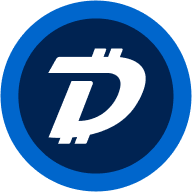
WOO Network price

WOO Network market info
Market cap = Circulating supply × Last price

WOO calculator


WOO Network price performance in USD
Popular WOO Network conversions
| 1 WOO to USD | $0.078730 |
| 1 WOO to EUR | €0.072392 |
| 1 WOO to PHP | ₱4.5167 |
| 1 WOO to IDR | Rp 1,306.51 |
| 1 WOO to GBP | £0.060816 |
| 1 WOO to CAD | $0.11323 |
| 1 WOO to AED | AED 0.28918 |
| 1 WOO to VND | ₫2,013.55 |
About WOO Network (WOO)
- Official website
- White Paper
- Github
- Block explorer
WOO Network FAQ
WOO Network is a cryptocurrency liquidity provider that offers deep liquidity at lower to zero costs and the least slippage. WOO is the name and ticker symbol of WOO Network's native utility and governance token.
Through API integration, WOO Network provides deep liquidity to institutional clients, such as cryptocurrency exchanges. To provide decentralized token swaps on WOOFi, WOO Network uses Synthetic Proactive Market Making (sPMM) liquidity pool.
CertiK, a leading blockchain security ranking platform, has audited all of WOOFi's products, including WOOFi Swap, Stake, and Earn. Additionally, WOOFi Swap is audited by the smart contract firm Verilog.
WOO Network takes regulatory compliance very seriously. According to their Q2 2022 report, WOO Network has obtained Virtual Asset Service Provider (VASP) licenses and registration in Poland, Taiwan, a few EU member states, and other regions with favorable crypto asset regulations.
Easily buy WOO tokens on the OKX cryptocurrency platform. OKX’s spot trading terminal includes the WOO/USDT trading pair.
You can also swap your existing cryptocurrencies, including XRP (XRP), Cardano (ADA), Solana (SOL), and Chainlink (LINK), for WOO with zero fees and no price slippage by using OKX Convert.
Monitor crypto prices on an exchange
ESG Disclosure
WOO calculator











